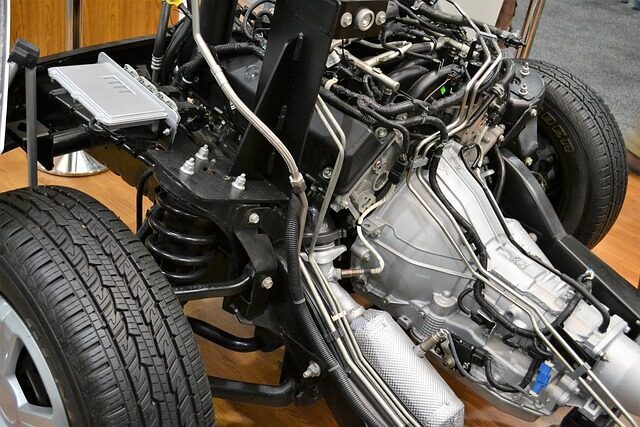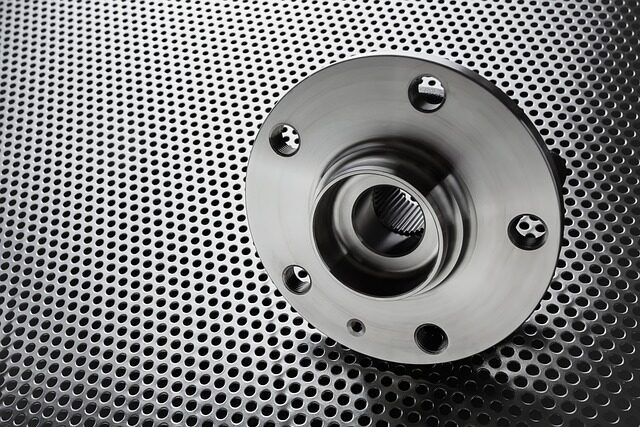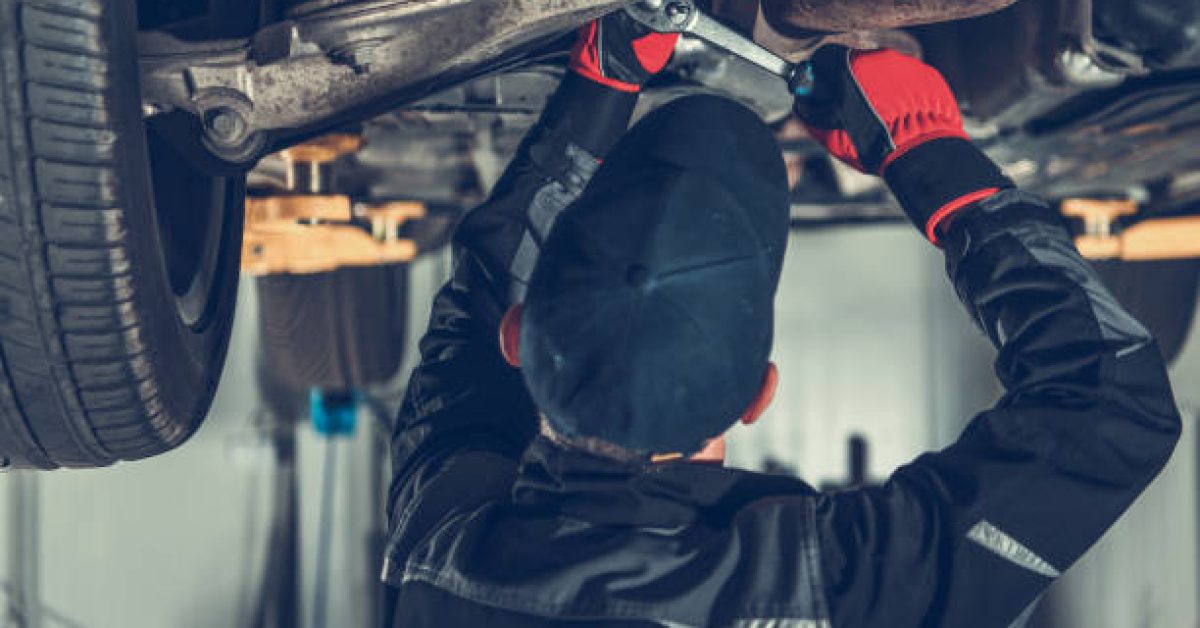
Properly functioning steering and suspension systems are crucial for a comfortable and safe ride. They allow drivers to control wheel direction and absorb road shocks. Key steering components include the steering wheel, column, rack and pinion, tie rods, and ball joints. suspension system comprises springs, shock absorbers, struts, and control arms. This article will discuss in-depth information about steering and suspension parts.
The Steering Wheel System

The steering system directs the car’s front wheels and includes the steering wheel, column, steering rack, and pinion, tie rods, and ball joints. The steering column transmits driver input to the steering linkage, which contains parts like the pitman arm, center link, and tie rod ends. Most cars also feature a power steering system with a power steering pump to aid in turning. Proper functioning is essential for vehicle control, and poor steering can lead to handling issues and safety risks.
Maintaining the Steering Systems

Regular inspections and replacement of worn-out steering components are vital. Indicators of common steering issues include difficulty turning, a loose or wobbly wheel, or strange noises when turning. Problems with wheel bearings and ball joints can also impact steering. Ignoring these signs can result in costly auto repair or accidents.
The Suspension System

The suspension system provides a smooth ride by absorbing road shocks. It includes springs, shock absorbers, struts, and control arms. Springs support the vehicle’s weight, while shock absorbers dampen spring movements to prevent excessive bouncing. Strut suspensions, combining springs and shocks, are common in modern vehicles. Control arms connect the vehicle frame to the wheel assembly, allowing vertical movement. A well-maintained vehicle’s suspension system improves traction and stability by keeping tires in contact with the ground.
Maintaining the Suspension System

Regular maintenance of the suspension system is essential. Signs of a suspension problem include a bumpy ride, uneven tire wear, or the car leaning to one side. Worn-out suspension components like shock absorbers, springs, and control arm bushings can cause these problems. Neglecting suspension repair can lead to further damage and safety risks.
The Connection Between Steering and Suspension Systems
Steering and suspension systems are interconnected. Worn ball joints or tie rod ends can affect wheel alignment and cause steering problems. A faulty vehicle’s suspension can lead to uneven tire wear and impact steering performance. Proper maintenance of both systems ensures they work together effectively.
Implications of Neglecting Steering and Suspension Systems
Neglecting maintenance can result in safety risks and costly repairs. For example, worn-out shock absorbers can cause premature wear on other parts, tires, and brakes. Regular inspections and timely service can prevent these issues and extend the vehicle’s lifespan.
The Role of Wheel Alignment in Steering and Suspension Performance
Wheel alignment involves adjusting the angles of the wheels relative to each other and the vehicle’s chassis. Key alignment angles are camber, caster, and toe angle. Proper alignment ensures tires are perpendicular to the road and parallel to each other, minimizing wear, improving fuel efficiency, and enhancing handling and vehicle’s stability. Misalignment can cause rapid tire wear, decreased fuel efficiency, poor handling, and steering issues. Factors like hitting rough terrain, potholes or curbs, and suspension wear can affect alignment. Regular alignment checks, typically every 6,000 miles or 6 months, are recommended. Technicians use specialized equipment to adjust alignment to manufacturer specifications, ensuring optimal steering and suspension performance.
New Suspension Components to Watch For
Today’s suspension systems include many critical suspension components beyond the basics. These include sway bar links, control arm bushings, and steering knuckles, each playing a vital role in ensuring your vehicle’s suspension can respond to road conditions and maintain control. When these parts wear out, drivers may experience poor ride quality, excessive vibration, or a pull to one direction during travel.
Why Power Steering Matters in Modern Vehicles
The power steering system enhances maneuverability by reducing the effort needed to turn the wheel. The power steering pump circulates fluid that helps move components within the steering system. If you experience stiffness or hear whining noises while turning, it might be time to replace your power steering fluid or pump. Ensuring this system works properly supports better handling and reduces stress on other parts of the vehicle.
How Coil Springs Affect Ride Height and Comfort
Coil springs are essential in determining your vehicle’s ride height and overall driving comfort. Along with shock absorbers, they absorb bumps and dips in the road, helping your vehicle ride smooth. Damaged or sagging coil springs can lead to a lower stance and uneven weight distribution, affecting vehicle’s stability and safety. Replacing worn springs is a vital part of proper suspension repair.
Auto Repair Services for Steering and Suspension Issues
Professional auto repair services can address both minor and major issues related to steering and suspension components. Whether you’re dealing with worn bar links, damaged control arms, or failing ball joints, trained technicians can diagnose the problem and offer long-term solutions. Quality service not only improves your vehicle’s performance but also prolongs the lifespan of critical systems responsible for your ride quality and safety.
Final Thoughts
Steering and suspension systems are critical for a safe and comfortable ride. Regular maintenance enhances vehicle performance, safety, and longevity. If you notice issues like a bumpy ride, uneven tire wear, or difficulty steering, seek professional inspection and repair. Proactive maintenance ensures a smoother, safer driving experience for years to come.
FAQ on Car Steering & Suspension Systems
1. What are the main components of a car's steering and suspension systems?
The main steering and suspension components include the steering wheel, steering column, rack and pinion steering system, tie rods, ball joints, control arms, shock absorbers, struts, springs, and wheel bearings. These parts work together to ensure a comfortable ride and vehicle control.
2. How does the steering system function?
The steering system allows the driver to control the car's front wheels which guides the rear wheels. It includes the steering wheel, steering column, rack and pinion, tie rods, and ball joints. The driver's input is transmitted through the steering column to the steering linkage, which then moves the wheels in the desired direction.
3. What is the purpose of the suspension system?
The suspension system absorbs road shock and ensures a smooth ride. It consists of components like coil springs, shock absorbers, struts, and control arms. These parts help maintain directional stability and keep the tires in contact with the road.
4. What is a power steering system, and how does it help?
A power steering system uses a power steering pump and sometimes a power steering reservoir to assist the driver in turning the steering wheel. This system reduces the effort needed to steer, especially at low speeds.
5. How often should I check my wheel alignment?
Wheel alignment should be checked every 6,000 miles or 6 months, or whenever you notice signs of misalignment such as uneven tire wear, poor handling, or the steering wheel pulling to one side. Proper alignment ensures optimal handling and tire longevity.
6. What are signs of steering system issues?
Signs of steering system issues include difficulty turning the steering wheel, a loose or wobbly wheel, or strange noises when turning. Other indicators can be hard steering and poor vehicle handling. Regular inspection of steering components like tie rod ends and ball joints is essential.
7. How can I tell if my suspension system needs maintenance?
Indicators of suspension issues include a bumpy ride, uneven tire wear, or the car leaning to one side. Worn-out suspension parts such as shock absorbers, springs, and bushings can cause these problems. Regular maintenance can prevent further damage and ensure safety.
8. What role do control arms play in the suspension system?
Control arms connect the vehicle frame to the wheel assembly, allowing vertical movement while keeping the wheels aligned with the chassis. They are crucial for maintaining directional stability and proper alignment.
9. Why is it important to maintain both the steering and suspension systems?
Maintaining both steering and suspension systems is vital because they are interconnected. For example, worn ball joints or tie rod ends can affect wheel alignment and steering performance. A faulty suspension system can lead to uneven tire wear and compromised handling. Regular maintenance ensures these systems work together effectively.
10. What happens if I neglect the maintenance of my steering and suspension systems?
Neglecting maintenance can lead to safety risks, such as loss of control or accidents, and costly repairs. For instance, driving with worn-out shock absorbers can cause premature wear on other components like tires and brakes. Regular inspections and timely repairs can prevent these issues and extend your vehicle's lifespan.




